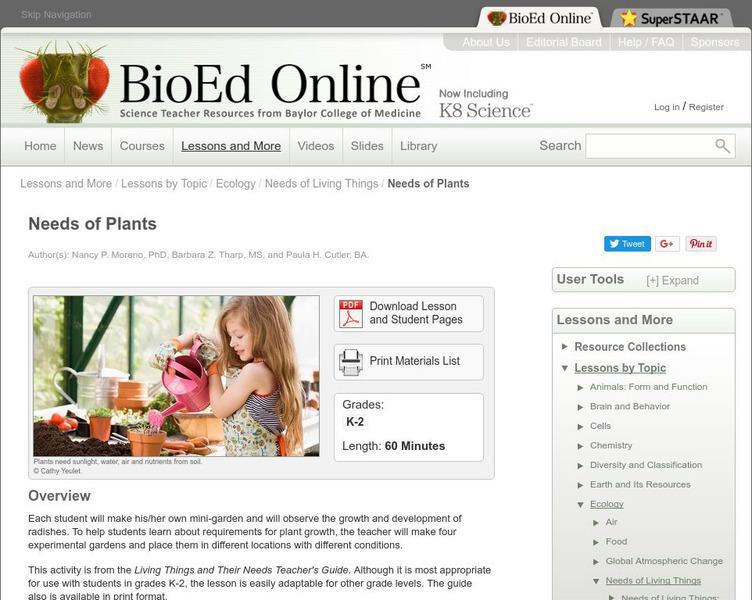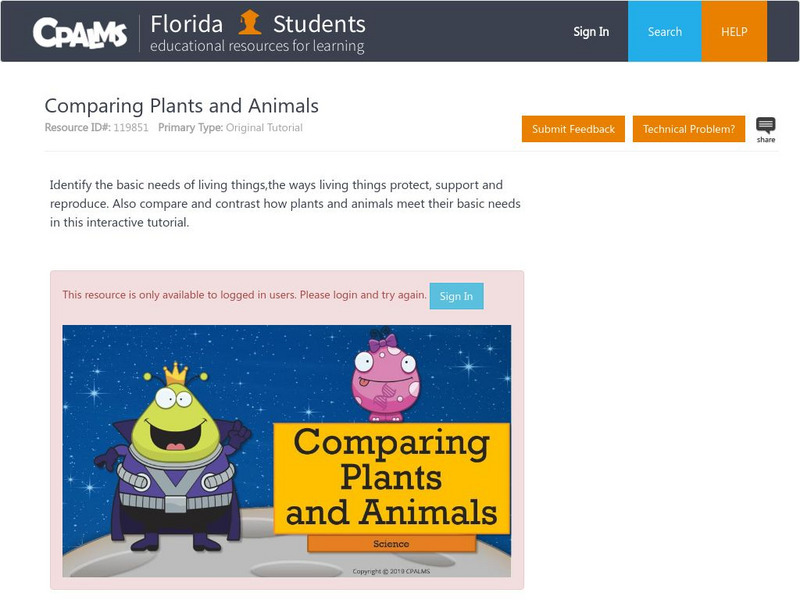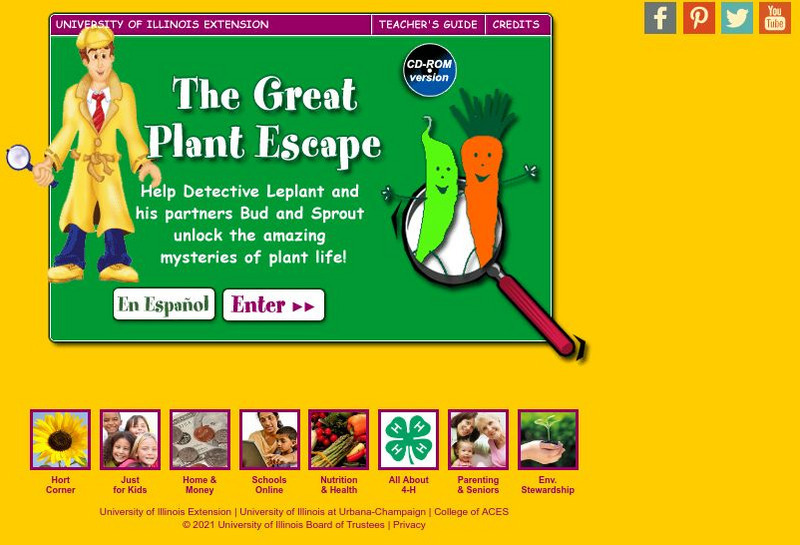Curated OER
The Sun: An Introduction
Students write entries in their Science Journals as they explore the Sun.
Curated OER
Habitat Preservation Project
Students demonstrate what happens when nature takes back land after humans have managed it. They find an area in the schoolyard, and mark it off with a boundary. Students build a simple fence with string and stakes. They put up a sign...
Curated OER
Earthquake Science Project
Students simulate the Earth's plates moving like an earthquake by using newspaper and soil. In this earthquake lesson plan, students push and pull the newspaper together that has soil on top and observe what happens.
Curated OER
Butterfly Camouflage
Fifth graders discuss camouflage and warnings by butterflies as a class. Students design and color their own butterflies that they are to place somewhere in the classroom. Students explain why their butterfly is colored the way that it...
Curated OER
Pollen Collection And Identification
Students investigate plant reproduction, pollen collection and identification. They collect pollen samples over a twenty four hour period and examine them under a microscope.
Curated OER
Protein
Students examine protein, what it is and how it functions in the body. In this protein lesson students study the food pyramid, what a protein is and what it does.
Curated OER
Measuring Aquatic pH
Middle schoolers apply the scientific method and safety rules to aquatic pH. They test unknown solutions for pH levels.
Curated OER
COLORS ON THE FARM
Students follow directions regarding what colors farm objects should be
colored. They identify various items pictured on provided worksheet that can be found on a farm or are made from farm animals. Finally, they match each color crayon...
Curated OER
Ocean Microstructure
Students assess the ocean's microstructure by analyzing graphs created during tne Ronald H.Brown research cruise. they discuss at what depths various sea animals live and write paragraphs on data analysis from the graphs.
Curated OER
Think Green
Students experience and practice compositing and recycling through hands-on-activities. They distinguish between which items from their trash can be recycled, composted and reused. The process for making recycled paper is also covered in...
BioEd Online
Bio Ed Online: Needs of Living Things: Pre Assessment
This is a pre-assessment to be done at the beginning of a unit on the needs of living things. Students draw themselves and what they need to survive. The lesson can be downloaded in PDF format.
BioEd Online
Bio Ed Online: Needs of Living Things: Post Assessment
A post-assessment at the end of a unit on the needs of living things. The lesson materials can be downloaded in PDF format.
PBS
Pbs Learning Media: The Needs of Living Things
In this lesson, students watch video clips of animals and plants in their natural environment, to gather evidence that all living things have basic needs that must be met in order to survive. Then, to illustrate their understanding of...
BioEd Online
Bio Ed Online: Needs of Plants
Each student will make his/her own mini-garden and will observe the growth and development of radishes. To help students learn about requirements for plant growth, the teacher will make four experimental gardens and place them in...
BioEd Online
Bio Ed Online: Living Things and Their Needs: We Need Water
This lesson focuses on living things' need for water. Students make lemonade and learn that water can be found in liquids other than a glass of water, and is also found in plants. The lesson can be downloaded in PDF format.
Other
Nasa: The Case of the Prize Winning Plants [Pdf]
This program uses a scenario with fictional detective characters to present plant growth to students. While the unit focuses on the basic needs and parts of plants, the topics of plant classification and adaptations, soil formation and...
Huntington Library
Huntington Library: Seeds, Soil, and Surprises
This site has excellent resources for teaching students about plants. It has a guide to scientific investigation and a glossary of plant terms. There are three lessons that each include a slideshow on the parts of a plant, the needs of...
CPALMS
Florida State University Cpalms: Florida Students: Comparing Plants and Animals
A tutorial that compares and constrast plants and animals. Explore how living things their obtain basic needs, protect, support, and reproduce. A PDF file of the tutorial is available.
University of Illinois
University of Illinois Extension: The Great Plant Escape
Inspector LePlant and his friends look at the world of plants in this site for younger students. Features include the parts of plants and the seven basic requirements that plants need to survive as well as a short quiz.
Huntington Library
Huntington Library: What Plants Need in Order to Survive and Grow: Soil [Pdf]
A lesson unit where students conduct an experiment to test whether plants need soil in order to grow.
Huntington Library
Huntington Library: What Plants Need in Order to Survive and Grow: Water [Pdf]
A lesson unit where learners work in small groups to conduct an experiment with two cacti to test whether plants need water.
BiologyWise
Biology Wise: An Overview of the Plant Growth Process
Discusses the basic needs of plants and the stages they go through in developing from a seed.
Huntington Library
Huntington Library: What Plants Need in Order to Survive and Grow: Light [Pdf]
A lesson plan unit where students conduct an experiment in small groups to test whether plants need light or not.
TeachEngineering
Teach Engineering: Biodomes
Students explore the biosphere's environments and ecosystems, learning along the way about the plants, animals, resources and natural cycles of our planet. Over the course of lessons 2-6, students use their growing understanding of...


















